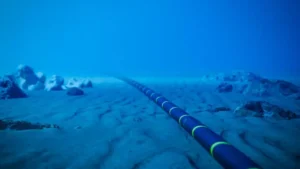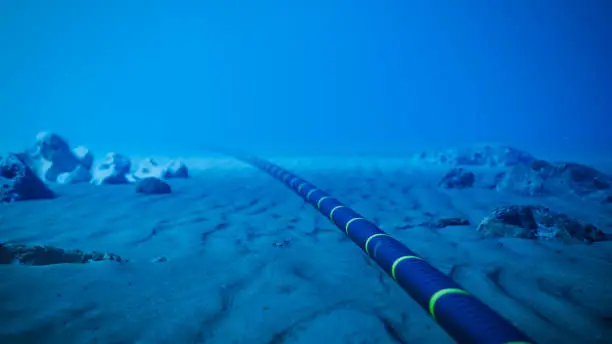Introduction
The way we explore, retrieve and consume resources from the depths of the sea has changed completely due to deep offshore technology. This modern field is a combination of engineering wonders, sophisticated gear and forward-looking methods that allow for dealing with extreme environments under water. Deep offshore technology remains crucial in meeting these demands for energy and other resources as well as ensuring their sustainability and efficiency.
- In this article, we will discuss in detail about deep offshore technology, its applications, and its effects on various sectors. If you are a student or professional or someone who wants to understand how we harness the power of the oceans, then this complete guide is for you.
The Development Of Deep Offshore Technology
Since inception, deep offshore technology has made huge strides. When it first began however, offshore exploration was restricted to shallow waters because of technological constraints. However, advances in engineering and materials science made it possible to explore greater depths.
- Innovations such as submersibles and diving apparatuses have enabled scholars to examine marine life and geology underwater. This was made possible through the creation of submarines and diving suits, which went on to be used in studies of oceanic flora and fauna as well as geological formations beneath water bodies. The twentieth century ushered in remotely operated vehicles (ROVs) and autonomous underwater vehicles (AUVs) that changed exploration for the better by making it safer and more efficient. Subsequently, deep offshore technology now encompasses robotics, artificial intelligence, real-time data analysis for improved operations.
Such developments have also facilitated resource extraction while allowing detailed research on deep-sea ecosystems thus supporting marine conservation activities. In this case, a two-pronged approach shows how important it is to strike a balance between technological advancement and environmental responsibility.
Applications in the Energy Sector
Deep offshore technology has several applications in the energy sector especially oil and gas production. For instance, semi-submersible rigs or drillships are used for offshore drilling platforms capable of withstanding adverse maritime conditions and reaching resources buried several thousand meters below the seabed.
- One way that safe and effective resource extraction can be ensured is through various subsea systems like blow-out preventer (BOP) valves or subsea trees. At the same time, exploration accuracy has been further boosted by advanced technologies like 4D seismic imaging and operational stability reinforced by dynamic positioning systems.
Other than oil and gas, deep offshore technology also supports the renewable energy sector. There is an increasing number of offshore wind farms as well as tidal energy installations which take advantage of ocean currents and wind patterns for sustainable energy production. These developments signify a change towards cleaner sources of power and lesser reliance on fossil fuels.
Environmental Impact and Mitigation Strategies
Deep offshore technology comes with huge benefits but also presents environmental issues. Activities such as drilling or pipeline laying can interrupt marine life systems, which often leads to pollution. Such concerns need to be met proactively.
- Efforts have been made in terms of technology to reduce the impact on the environment. The use of environmentally friendly drilling fluids for example and using advanced spill containment systems are measures that reduce the risk of marine pollution occurring at drilling sites. Additionally, they will operate under strict regulatory frameworks that demand adherence to best practices and promotion of environmental sustainability.
To achieve this goal, research should focus on creating biodegradable materials as well as carbon capture technologies that are capable of mitigating long-term environmental impact resulting from offshore activities.
Difficulties of Working In Deep Offshore Environments
Deep offshore environments are not devoid of challenges. Severe pressure, low temperatures, and blindness create major obstacles for engineers and scientists. Equipment that can endure such tough conditions, yet work properly must be developed.
This means that communication and navigation are also complicated in underwater situations. Underwater GPSs do not work so we have to use the acoustic positioning systems and sonars. Nevertheless, these systems need regular calibrations and maintenance to provide exact data for navigation and mapping.
- In addition, deep offshore operations incur high costs including equipment manufacturing, deployment and maintenance which may pose financial challenges. However, despite these difficulties the benefits far exceed the drawbacks in deep offshore exploration.
Innovations in Deep Offshore Technology
The bedrock of deep offshore technology is transparency in creativity. Automation, artificial intelligence (AI), and real-time monitoring systems have seen significant advancements introduced recently. For example during off-shore activities smart sensors coupled with IoT enabled devices change the way data was collected as well as analyzed.
- Hybrid underwater vehicles integrating AUVs’ capacity with that of ROVs offer more flexibility as well as effectiveness. Additionally utilizing 3D printing in producing offshore equipment has reduced production time-frame thereby lowering cost per unit or cost of introducing new technologies quickly enough into the market place through faster deployments
These innovations serve to not only better operational efficiency, but also improve safety levels. They are designed in such a way that those working under the sea have low chances of getting involved in an accident.
The Future of Deep Offshore Technology
The future prospects for deep offshore technology are bright with ongoing research and development that continue to bring new possibilities. Emerging fields such as underwater robotics, nanotechnology, and renewable energy integration will redefine this industry.
- One of the most exciting developments today is the exploration of deep-sea mineral extraction. In its infancy, it has the potential to open up resources essential for technological progress like rare earth elements used in electronic equipment.
On top of this, governments, private corporations as well as research institutions are collaborating on projects which will foster innovation and ensure that deepwater technologies progress responsibly.
The Role of Deep Offshore Technology in Global Sustainability
Deep offshore technology plays a crucial role towards achieving global sustainability goals. This discipline supports efficient use of resources and sustainable renewable energy initiatives.
Efforts made toward reduction of environmental footprints by marine operations are in line with international undertakings to fight climate change. These include improvements in carbon capture and storage (CCS) technology which have contributed to a decline in greenhouse gas emissions from offshore installations for instance.
Conclusion
Deep offshore technology is a manifestation of human intelligence and our ability to conquer hardships for the sake of progress. Its applications are wide-ranging, covering energy extraction as well as marine conservation among others, all geared towards shaping this earth.
- If innovation can be embraced by everyone, environmental issues looked into and collaboration promoted then we shall have deep-sea offshore engineering that will continue to promote sustainable existence in those areas. As we look ahead, possibilities are immense and profound like the seas themselves.






1 Comment
Pingback: E Universe Technologies LLC of the Impact and Innovations - technologyleaks